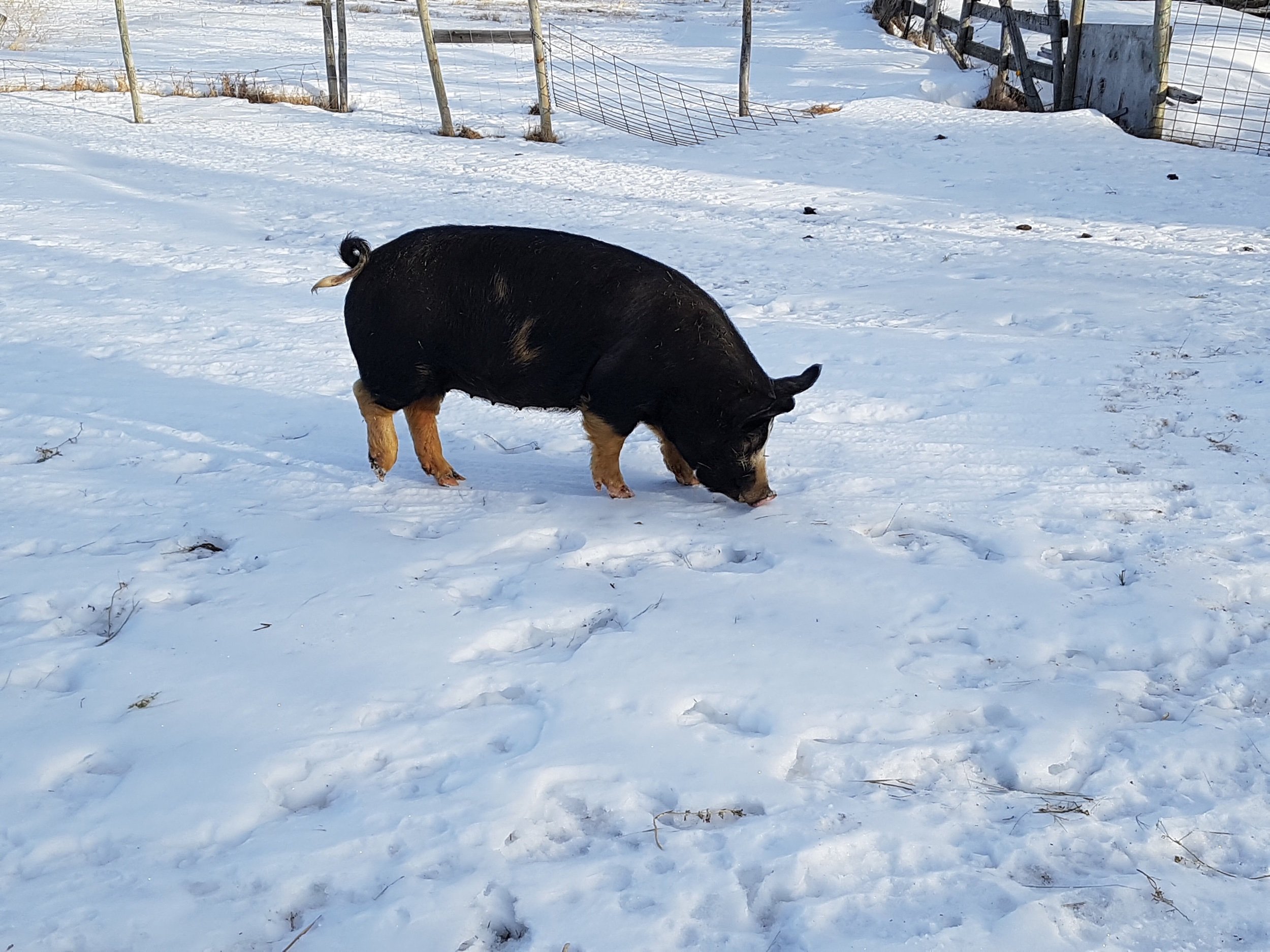Berkshire pigs can be free ranged even in the cold Saskatchewan winter
The Berkshire pig breed is an old fashioned breed that is well suited to being raised outdoors - even in the extremes of the Canadian climate.
Winter is my least favourite time of year. If I didn’t have animals to care for I think I would just hide away for winter. Unlike our Berkshire pigs I am a complete wuss when it comes to the extreme cold Saskatchewan temperatures.
They love winter and their hardiness amazes me. They thrive in the extremes of the Canadian climate - which is why our passion is raising pedigree Berkshire pigs and keeping their hardy genetics alive.
Water
This is usually one of the things that stops people keeping outdoor pigs over winter. Yes it freezes!
We have a heated water bowl for the cows and horses and our pigs have a little step they can stand on so they can drink out of it too.
The last 2 years this has frozen up on us.. even though it is heated so we use our water hydrant - we can either have a water trough right under it, or we haul pails of water to where the pigs are.
If you are putting in new water lines put them close to your animals if you don’t want to carry pails for the winter months…. It is a good work out though lol. I have hauled water from the house before which is it fun!
Food
We feed ours extra grain on the coldest days or if we have bad storms forecast - that way if we have issues getting to the feed bin at least we know they have had extra the night before.
We don’t give ours hay as a main part of their diet but they do eat it and love rooting around in the bales looking for tasty treats and alfalfa that the cows and horses drop on the ground.
Pig Shelters & Straw
Of course we do have lots of shelters for our pigs and we put plenty of straw out for them. They move freely around the shelters and they always know the best one to be in.
They can stand the cold, wind and rain/snow but not all at once blowing directly on them.
We use old grain bins for shelters and we have a metal calf shelter which they - and we prefer. They haven’t destroyed it like they do wooden buildings. We also have a pigloo - which is a damaged water tank - this is perfect for the younger pigs. We even put heat lamp in it one year when we had a pig farrow in it.
It doesn’t always look pretty but we use whatever we can for windbreaks over the entrances - tarps, rubber matting, old blankets, comforters and old carpets - then we put straw bales in front of the shelters for additional windbreaks.
They will pull straw from the bales and carry in their mouth to their bed. They will do this for hours and make a straw bed to bury themselves under. We usually help them as we can move straw quicker than they can but building their own bed is what they do naturally.
Then the pigs will all snuggle up together under the straw keeping each other warm. There is the occasional squabble for the best spot but they settle down quickly.
Some farmers manage without shelters and put lots of big round straw bales out and the pigs bury under those for winter with no problems.
Berkshires are an old fashioned lard pig & their extra fat helps keep them insulated,
This fat gives us delicious pork and juicy marbled meat lacking from the modern, factory farmed, leaner breeds of pigs - these don’t need a natural fat covering because they are raised in climate controlled barns - this is why store bought pork doesn’t have flavour like outdoor raised pigs.)
The extra fat is never wasted. In fact I generally don’t have enough! We render it all into lard.
For more in depth information on raising free range pig you can check out my e-book - A beginners guide to raising Happy Free Range Pigs.
This blog post was written in participation of a Blogging Bee-an online gathering reminiscent of the quilting bees and sewing bees of days past when women would bring their work together to create art. If you enjoyed this post with the theme "More About...” take a look at these posts from other farmers, small business owners, homesteaders, and creatives.
Everything You Need to Know About Wreath Season ‘22 by Megan Rudroff
Herefords: Why We Chose This Breed of Cattle by Jessica Haberman








